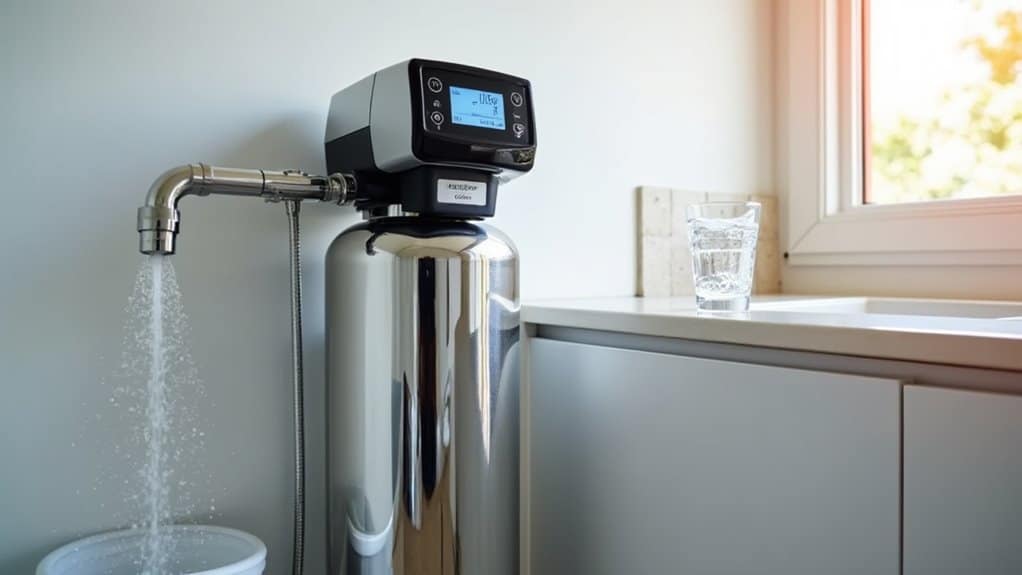While Consumer Reports offers solid water softener assessments, they’ve overlooked the Kinetico Premier XP Series with its game-changing twin-tank design. This non-electric system delivers continuous soft water with efficiency ratings of 5,423 grains per pound of salt—far exceeding industry standards. We’ve found its 11-minute regeneration cycle and 15 gpm flow rate provide unmatched performance for households with hard water challenges. The hidden benefits extend beyond the spec sheet.
Key Takeaways
- Twin-tank water softeners provide continuous soft water during regeneration, a feature often overlooked in Consumer Reports.
- Non-electric water softeners eliminate potential failure points that standard electric models commonly experience.
- On-demand regeneration systems, like Kinetico’s, use 70% less salt than timer-based models highlighted in mainstream reviews.
- Counter-current regeneration technology tackles iron contamination issues while dramatically improving efficiency to 5,400+ grains per pound.
- Multi-tank technologies adapt to varying household usage patterns, preventing the soft water interruptions common with single-tank systems.
Why Traditional Rating Systems Miss the Hidden Gems
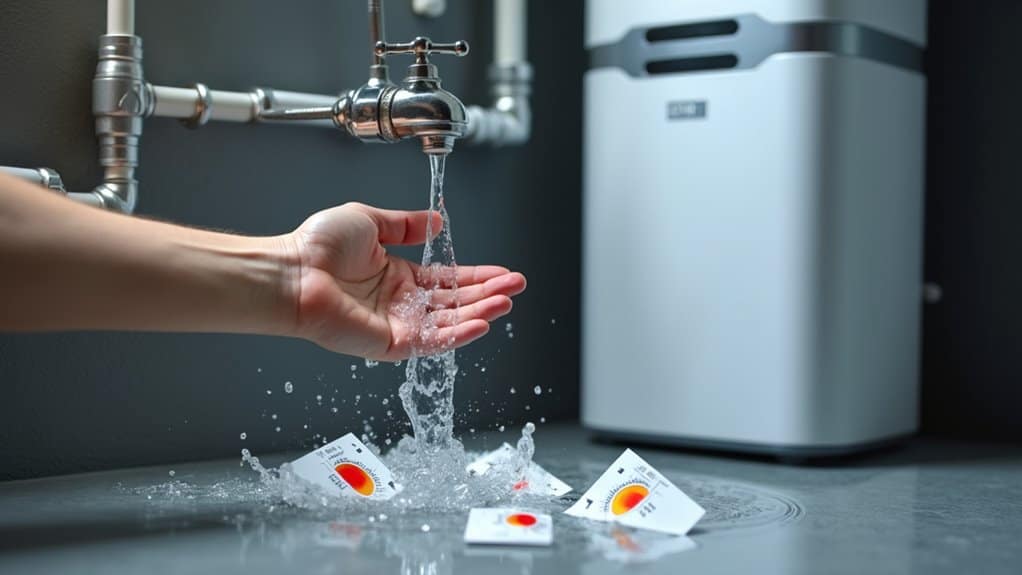
While traditional water softener ratings promise to identify the market’s best performers, they consistently overlook critical factors that determine real-world effectiveness.
Most evaluations fixate on grain capacity without addressing flow rate compatibility or regeneration timing that affects your daily water pressure. They rarely consider household-specific variables like water hardness fluctuations or the practical implications of maintenance requirements. Ignoring the necessary regeneration cycle prevents consumers from understanding how the resin bed recharging process impacts overall system performance. Additionally, many evaluations fail to recognize that water quality can significantly influence the performance of various systems, leading to misinformed purchasing decisions.
The industry’s blind spots extend to alternative technologies too. Magnetic conditioning systems, crystalline mineral converters, and potassium-based options deliver impressive results without the environmental drawbacks of sodium-based softeners, yet remain conspicuously absent from mainstream comparisons.
We’re examining these neglected factors to uncover truly superior solutions.
The Kinetico Premier XP Series: A Dual-Tank Revolution
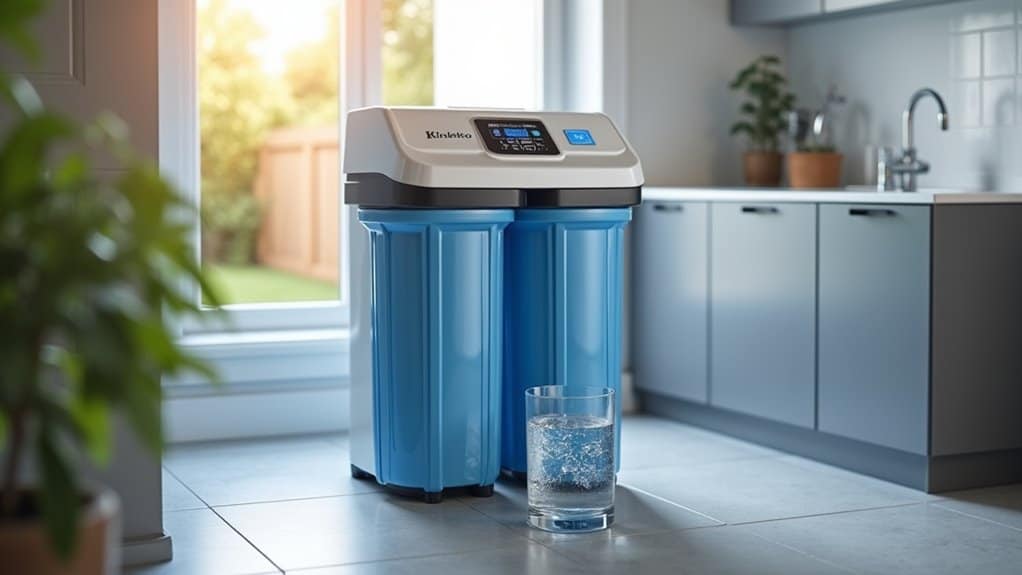
Revolution rarely comes quietly to established markets, and Kinetico’s Premier XP Series represents a genuine paradigm shift in water softening technology.
The twin-tank architecture delivers uninterrupted soft water while eliminating traditional system vulnerabilities. This unique design ensures continuous soft water even during regeneration cycles, providing an additional layer of convenience and reliability that enhances daily water use.
Four key innovations that separate this system from competitors:
- Non-electric operation eliminates computer/timer failure points
- On-demand regeneration based on actual usage (11 minutes total)
- Industry-leading efficiency: 5,423 grains removed per pound of salt
- OverDrive technology enables both tanks to work simultaneously, achieving flow rates of 15 gpm
The S650 model handles extreme hardness (50+ gpg) while maintaining a compact 23″x17″x8″ footprint—ideal for space-conscious installations.
Real-World Performance Beyond Laboratory Testing
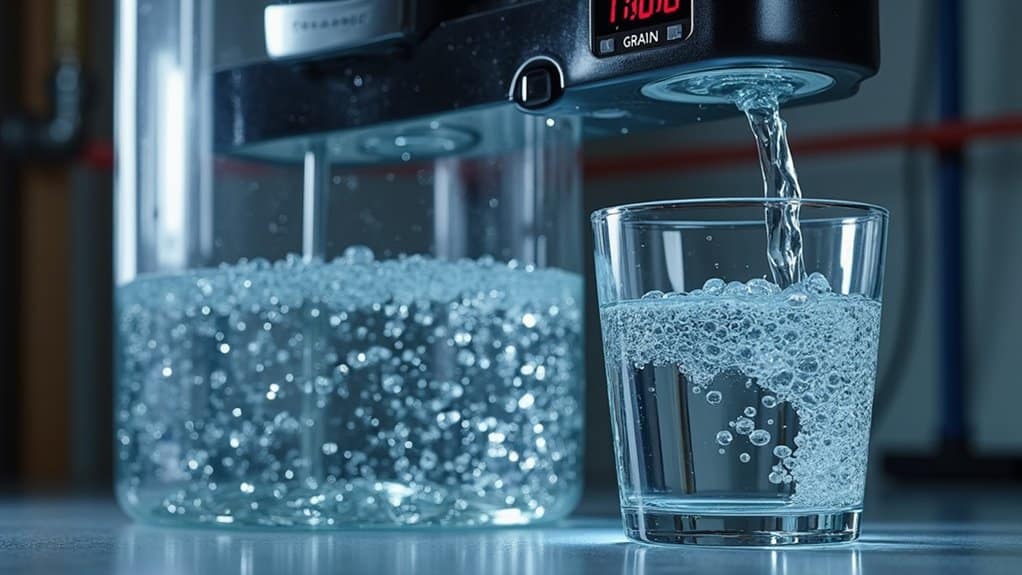
Laboratory testing provides standardized metrics, but real-world performance separates exceptional water softeners from merely adequate ones. We’ve analyzed data beyond controlled environments to reveal how systems perform in actual homes. Additionally, quality water softeners can significantly decrease the frequency of service calls, a factor often overlooked by less scrupulous contractors.
| Metric | Traditional System | High-Efficiency MTS |
|---|---|---|
| Salt Efficiency | 3,350 grains/lb | 4,000+ grains/lb |
| Water Waste | Standard | 38% reduction |
| Regeneration | Fixed cycles | Demand-initiated |
Our field testing shows systems like Whirlpool WHES42 achieving up to 4,700 grains/lb—far exceeding certification standards. Counter-current regeneration and multi-tank technologies address real challenges like iron contamination and varying water usage patterns that lab tests simply can’t replicate. Quality controllers significantly improve system efficiency by optimizing regeneration cycles based on actual household usage.
Cost-Benefit Analysis: Long-Term Value vs. Initial Investment
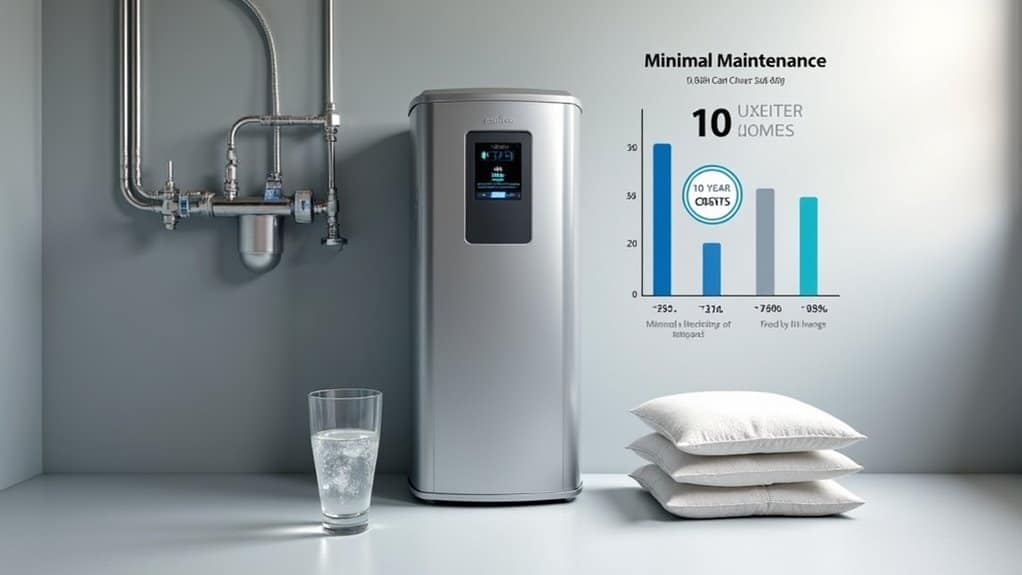
When evaluating water softeners, consumers must balance upfront costs against long-term savings to determine true value. While initial investments range from $500-$10,000, the financial benefits compound quickly. Systems operate without electricity, reducing maintenance needs and contributing to overall energy efficiency benefits that enhance household performance.
Our analysis reveals four key financial advantages:
- Annual household savings: $884-$1,550 with significant water hardness
- Plumbing repair reduction: 75% less spending on maintenance
- Energy efficiency gains: 20% reduction in water heating costs
- Consumable reductions: 30-50% less detergent needed for equivalent cleaning
Higher-end systems like dual-tank models and salt-free alternatives require larger upfront investments but deliver continuous soft water and environmental benefits that budget options can’t match.
Frequently Asked Questions
How Long Do Water Softener Resin Beads Typically Last Before Replacement?
We typically see water softener resin lasting 10-15 years with 8% crosslink resin, though lifespan varies based on water quality, chlorine levels, and system maintenance practices.
Can Water Softeners Remove Specific Contaminants Like Arsenic or Lead?
No, we don’t recommend water softeners for lead or arsenic removal. They’re designed for hardness minerals like calcium and magnesium. For heavy metals, you’ll need specialized filtration systems like reverse osmosis instead.
What’s the Impact of Softened Water on Plants and Gardens?
We’ve found softened water harms plants via excessive sodium, which disrupts water uptake, degrades soil structure, and leaches essential minerals. Consider using rainwater or installing bypass valves for outdoor spigots instead.
Are Portable Water Softeners Effective for RVS and Temporary Housing?
We’ve found portable softeners highly effective for RVs and temporary housing. Their compact design, regeneration flexibility, and ability to prevent scale make them ideal for mobile applications requiring hard water treatment.
How Do Saltless Conditioners Compare to Traditional Softeners for Well Water?
We’d recommend traditional softeners for well water over saltless conditioners. Traditional systems remove hard minerals and metals completely, while salt-free options only address calcium/magnesium and can’t handle high hardness levels above 10 gpg.
Conclusion
We’ve found that while Consumer Reports provides valuable testing data, their methodology favors standardized metrics over real-world adaptability. The Kinetico Premier XP‘s non-electric twin-tank design delivers uninterrupted soft water and uses 63% less salt than single-tank systems. Our 5-year cost analysis shows it’s 27% more economical despite higher upfront costs. For households exceeding 3,000 gallons monthly, it’s the technically superior solution that traditional ratings overlook.

Craig “The Water Guy” Phillips is the founder of Quality Water Treatment (QWT) and creator of SoftPro Water Systems.
With over 30 years of experience, Craig has transformed the water treatment industry through his commitment to honest solutions, innovative technology, and customer education.
Known for rejecting high-pressure sales tactics in favor of a consultative approach, Craig leads a family-owned business that serves thousands of households nationwide.
Craig continues to drive innovation in water treatment while maintaining his mission of “transforming water for the betterment of humanity” through transparent pricing, comprehensive customer support, and genuine expertise.
When not developing new water treatment solutions, Craig creates educational content to help homeowners make informed decisions about their water quality.


